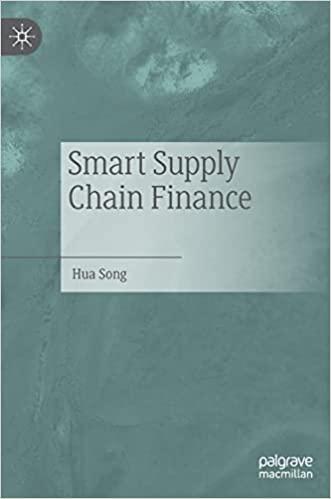Question
The firm is 35% equity financed; shares currently trade at $37.00 and do not pay a dividend. Debt capital is provided by a single issue
The firm is 35% equity financed; shares currently trade at $37.00 and do not pay a dividend. Debt capital is provided by a single issue of bonds (20-year, $1,000 par value, $82.50 annual coupon) currently trading at $875. The firms beta is 1.25. Their traditional hurdle rate has been 12%, though the rate has not been reviewed in many years. Over the years, shareholders have come to expect a 10% return. Their corporate tax rate is 25%. Treasury securities are yielding 9.25%. The market rate of return on equities is 12.25%.
The Machine Tool Division is considering the purchase of a piece of highly automated, robotic production equipment. It would replace older machines and would offer improvements in quality, and some additional capacity for expansion. Because of the magnitude of the proposed expenditure, a careful estimate of the projects costs and benefits is needed.
They are currently using several old-style machines that together had cost $700,000. Depreciation of $220,000 has already been charged against this total cost; depreciation charges are $80,000 annually. Management believes these machines will need to be replaced after six more years. They have a current market value of $250,000.
The old machines require 12 workers per shift earning $13.50/hr plus 3 maintenance workers paid $14.50/hr. The plant operates eight-hour day and afternoon shifts five days each week; maintenance workers are assigned to the afternoon shift only. Maintenance expenses have been running at $5,000 annually; the cost of electricity has been $26,600 per year. The production process is not only labor intensive, but also physically demanding. Workplace injuries are not uncommon and lately medical claims have increased.
The new machine will have a total cost that includes shipping, installation and testing of $1.5 million. The plant will also need $350,000 in modifications to accommodate the new machine. These costs will be capitalized and depreciated over the six-year estimated life of the machine. The new machine would require only two skilled operators (one per shift) who would earn $20/hr. Maintenance will be outsourced and cost $90,000 per year. The annual cost of electricity is estimated to be $50,000.
Certain aspects of the decision are difficult to quantify. Managements relationship with the union hasnt always been a smooth one and union leadership may not agree to the layoff of the redundant workers. Reassigning them to positions in other divisions might be easier but there are currently only a handful of suitable openings, some of which are not in the collective bargaining unit.
The specs on the new machine indicate that even higher levels of product quality and lower scrap rates are possible. Considering ever-increasing competition, this might prove to be of enormous competitive advantage. The new machine has a maximum capacity 27% higher than the old semi-automated machines which are currently operating at 90% capacity.
Assignment Parts Clearly Label Answers:
- Calculate the firms Weighted Average Cost of Capital (WACC).
- Identify and analyze the relevant cash flows for the two alternatives - buying the new machine vs. continuing to use the old ones. Cash flows for both alternatives occur for both machines over 6 years (beginning in year zero and ending in year 5). This requires students to show annual cash flows for each year similar to the Exam Prep 3 problem shown in the Week 8 Module. Capital analysis techniques should be done on the cash flows which should include (but not limited to) Net Present Value (NPV) analysis. Points will be deducted if this is not done.
- List and briefly describe any areas of uncertainty or concern for this project beyond the obvious ones described in the narrative. What effect might they have? Bullet points are just fine.
- Based on your results in parts b & c, explain why you would or would not proceed with the new machine. While the two scenarios (keep old or buy new) each have cash inflows and outflows associated with them, they are both net cost producing. The decision should be based on the differential in the NPV for each alternative (which alternative produces the lower cost), considering the uncertainties and unknowns in Part C
Step by Step Solution
There are 3 Steps involved in it
Step: 1

Get Instant Access to Expert-Tailored Solutions
See step-by-step solutions with expert insights and AI powered tools for academic success
Step: 2

Step: 3

Ace Your Homework with AI
Get the answers you need in no time with our AI-driven, step-by-step assistance
Get Started


